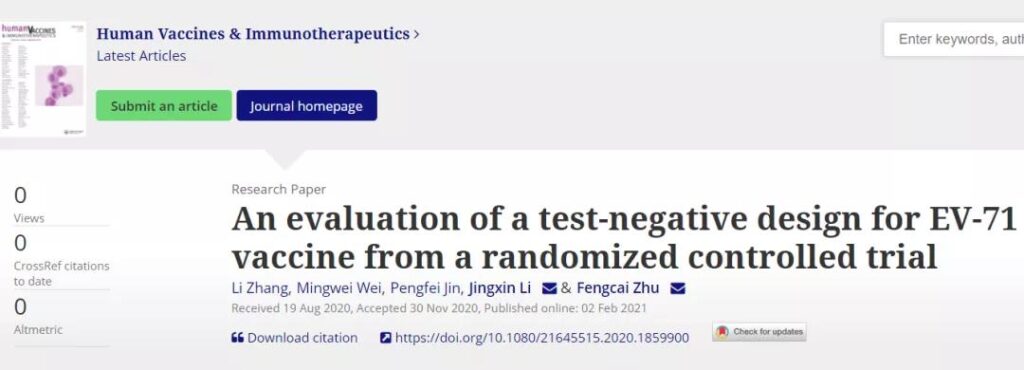Evaluation of the protective effect of COVID-19 vaccine
- Normal Liver Cells Found to Promote Cancer Metastasis to the Liver
- Nearly 80% Complete Remission: Breakthrough in ADC Anti-Tumor Treatment
- Vaccination Against Common Diseases May Prevent Dementia!
- New Alzheimer’s Disease (AD) Diagnosis and Staging Criteria
- Breakthrough in Alzheimer’s Disease: New Nasal Spray Halts Cognitive Decline by Targeting Toxic Protein
- Can the Tap Water at the Paris Olympics be Drunk Directly?
Evaluation of the protective effect of COVID-19 vaccine
Evaluation of the protective effect of COVID-19 vaccine. Evaluation of the protective effect of the COVID-19 vaccine-evaluation of the effectiveness of the negative test design application.

Based on the preliminary results of the Phase III clinical efficacy test of the COVID-19 vaccine, multiple COVID-19 vaccines have been authorized for emergency use or listed with conditions. The protective effect of the COVID-19 vaccine in the real world is an important issue that needs to be considered.
In addition, the completion of the final marketing approval based on immunogenicity data + vaccine protection effect data after approved use has also been recommended by experts in the clinical related fields of vaccines. In recent years, test-negative design (TND) has been widely used internationally to evaluate the protective effect of vaccines in the real world.
At present, the relevant research on the use of test negative design to evaluate the protection effect of COVID-19 vaccine has been planned and implemented, but how effective is the application of test negative design in the evaluation of COVID-19 vaccine protection effect?
On February 2, 2020, the team of Professor Fengcai Zhu from the Jiangsu Provincial Center for Disease Control and Prevention published an online article “An evaluation of a test-negative design for EV-71 vaccine from a randomized controlled trial” in the authoritative international vaccine magazine “Human Vaccines & Immunotherapeutics” (full text Connect https://doi: 10.1080/21645515.2020.1859900.).
This article combines the efficacy of EV71 inactivated vaccine clinical trials to analyze and evaluate the effectiveness of the test negative design in the study of the protection effect of the EV71 inactivated vaccine, which can provide the effectiveness evaluation of the test negative design in the evaluation of the COVID-19 vaccine protection effect reference,
This study is based on a post-hoc analysis of a multi-center, randomized, double-blind, placebo-controlled phase III clinical trial of EV71 inactivated vaccine (NCT01508247). The clinical trial enrolled 10245 children and infants aged 6-35 months who were randomly assigned to the vaccine group (5120 people) and the placebo group (5125 people), and received two doses of vaccine on the 0th and 28th days.
A high-quality active and passive joint monitoring system is adopted to capture any suspected EV71 cases to avoid the omission of potential cases. From 56 days to 14 months after the first injection of vaccination, the researchers collected and sorted out the relevant information of the suspected cases caused by EV71 infection, and applied the negative test design for analysis.
The analysis results show that the protective effect of the EV71 vaccine against EV71-related diseases, EV71-related hand-foot-mouth disease and other EV71-related cases is consistent with the protective efficacy obtained in phase III clinical trials.
image
The negative test design is the most widely used in the research on the protective effect of influenza and rotavirus vaccines. Relevant studies have confirmed that the vaccine protection effect estimated by the negative test is consistent with the protection obtained in clinical trials under the conditions of clinical trials. This study also confirmed The validity of the negative test design for the evaluation of the protective effect of the EV71 vaccine.
In addition, SARS-CoV-2 and influenza virus belong to the same respiratory virus, which can refer to the research design for evaluating the protective effect of influenza vaccine.
(source:internet, reference only)
Disclaimer of medicaltrend.org



